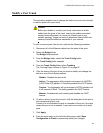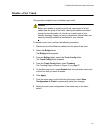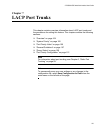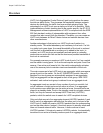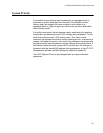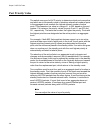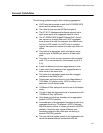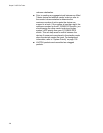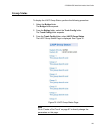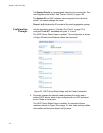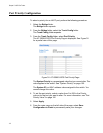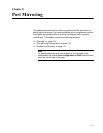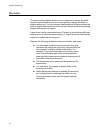
AT-GS950/16PS Switch Web Interface User’s Guide
107
General Guidelines
The following guidelines apply when creating aggregators:
LACP must be activated on both the AT-GS950/16PS
switch and its partner device.
The other device must be 802.3ad-compliant.
The AT-S112 Management software supports up to
eight active ports in an aggregate trunk at a time.
The AT-GS950/16PS Gigabit Ethernet PoE+ Switch
can support up to eight static and LACP aggregate
trunk groups at a time (for example, four static trunks
and four LACP trunks). An LACP trunk is counted
against the maximum number of trunks only when it is
active.
The ports of an aggregate trunk must be the same
medium type: all twisted pair ports or all fiber optic
ports.
The ports of a trunk can be consecutive (for example
ports 1-5) or nonconsecutive (for example, ports 2, 4,
6, 8).
A port can belong to only one aggregator at a time.
A port cannot be a member of an aggregator and a
static trunk at the same time.
The ports of an aggregate trunk must be untagged
members of the same VLAN.
Twisted pair ports must be set to Auto-Negotiation or
1000 Mbps, full-duplex mode. LACP trunking is not
supported in half-duplex mode.
1000Base-X fiber optic ports must be set to full-duplex
mode.
You can create an aggregate trunk of transceivers with
1000Base-X fiber optic ports.
Only those ports that are members of an aggregator
transmit LACPDU packets.
A member port of an aggregator functions as part of an
aggregate trunk only if it receives LACPDU packets
from the remote device. If it does not receive LACPDU
packets, it functions as a regular Ethernet port,
forwarding network traffic while also continuing to
transmit LACPDU packets.
The port with the highest priority in an aggregate trunk
carries broadcast packets and packets with an



